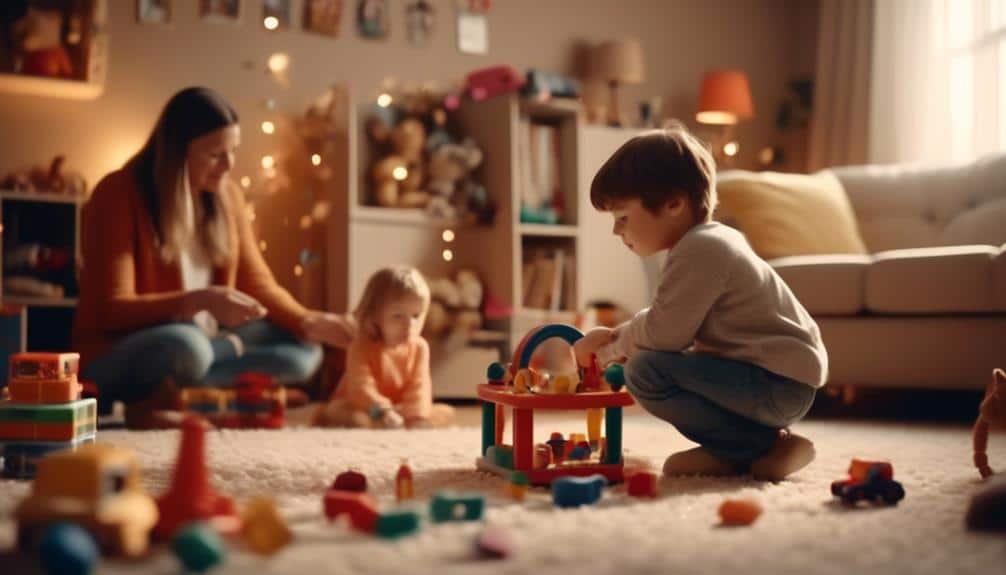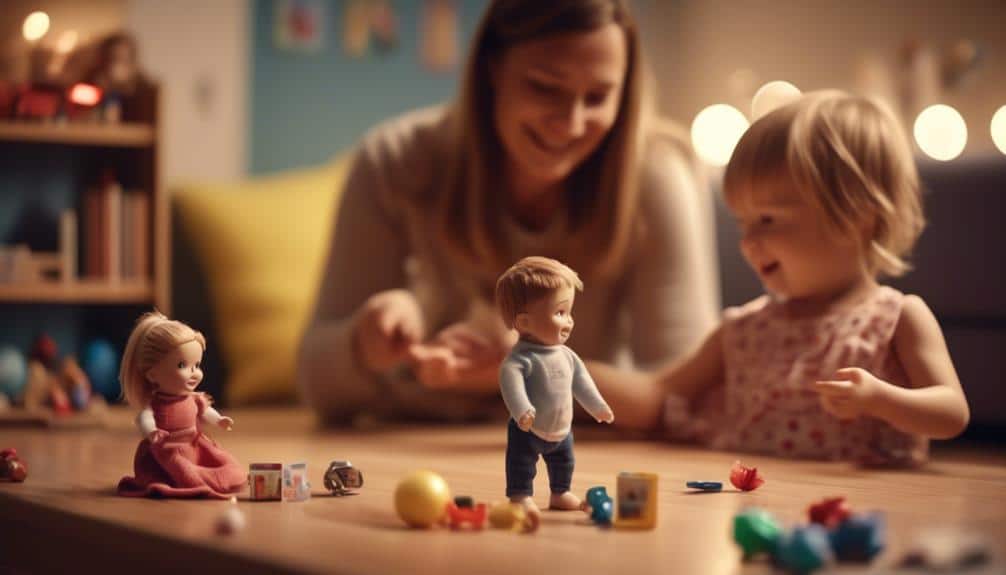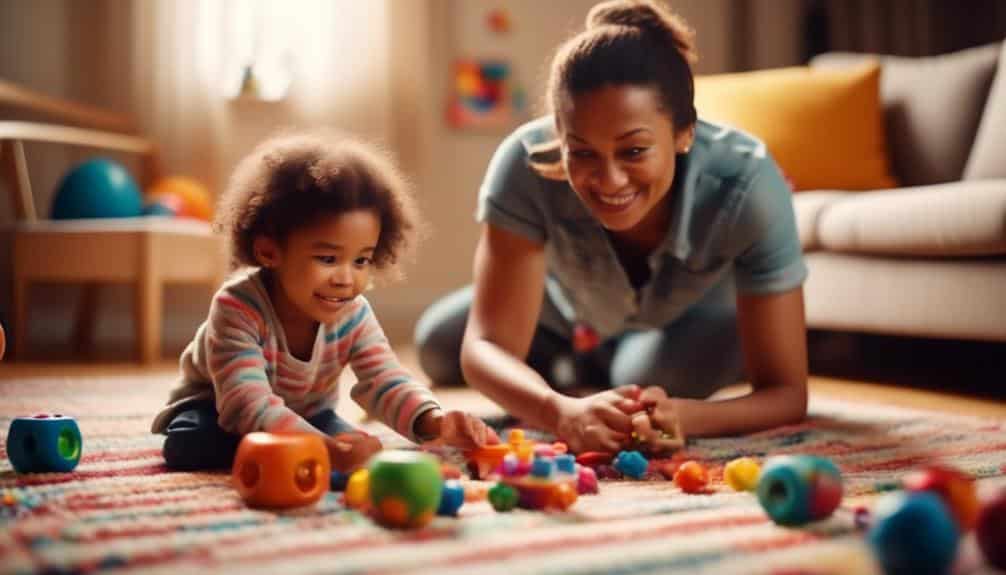Parent DIRFloortime training tips pave the way for the Developmental Individual-difference Relationship-based model (DIRFloortime), a revered approach fostering growth in children facing developmental challenges, including autism spectrum disorder. This framework prioritizes emotional and relational development through playful interactions, demanding nuanced understanding and customized application for genuine effectiveness. Parents aiming to implement DIRFloortime strategies at home can significantly benefit from targeted training, providing essential tools for success. Navigating the complexities of parent-directed DIRFloortime training involves grasping foundational principles and skillfully integrating them into daily routines. Beyond simple play or interaction, these strategies encompass support, education, and adaptability.
Exploring the six best practices reveals their profound potential to influence a child’s developmental trajectory and the parent-child relationship. To understand the intricacies and appreciate their transformative capacity, one must scrutinize each strategy, recognizing that the journey through these six best strategies is as much about the process as the outcomes.
Key Takeaways
- Prioritize emotional development as a foundation for learning in DIRFloortime training.
- Create a supportive environment that aligns with a child’s comfort and sensory needs.
- Establish emotional safety through predictable routines, clear boundaries, and open communication.
- Tailor the sensory characteristics of the surroundings and incorporate purposeful sensory activities.
Understanding DIRFloortime Principles
Frequently overlooked in traditional behavioral interventions, the principles of DIRFloortime prioritize a developmental and relationship-based framework that diverges from mere behavior management to foster more profound, more meaningful interactions and growth in children with autism. This approach, rooted in the work of Dr. Stanley Greenspan, emphasizes emotional development as a cornerstone for learning, enabling children to form a solid foundation for social and cognitive skills. By following the child’s lead in the play, caregivers can discern the child’s natural emotional interests and respond in ways that encourage engagement and reciprocal interactions.
DIRFloortime’s distinctive methodology promotes a child’s self-expression, communication, and emotional thinking. It is not merely about reducing unwanted behaviors but nurturing a child’s ability to relate, communicate, and think. The approach is implemented through warm, playful, and empathetic interactions that transcend traditional structured activities.
Professionals and parents who adopt the DIRFloortime model are trained to observe, interpret, and respond to the child’s cues. This careful attunement to the child’s developmental level and individual differences cultivates an environment where they feel understood and supported, optimizing their developmental potential.
Creating a Supportive Environment

Creating a supportive environment within the context of DIRFloortime requires careful consideration of physical spaces that resonate with a child’s comfort levels and sensory needs. Selecting areas conducive to play and interaction can significantly enhance a child’s emotional safety, fostering a more secure and engaged learning atmosphere. Integrating a child’s sensory preferences into these environments is essential for promoting focused and sustained engagement in therapeutic play activities.
Selecting Comfortable Play Spaces
To optimize a child’s developmental progress through DIRFloortime, selecting a play space that is quiet, comfortable, and tailored to the child’s individual sensory needs and preferences is critical. The environment plays a significant role in supporting the child’s engagement and growth. Hence, Parent Coaching should emphasize the importance of:
- A designated area that minimizes auditory and visual distractions to facilitate focused interaction.
- A setting that accommodates the child’s need for movement, promoting both physical and cognitive exploration.
- An environment is sensitive to the child’s sensory processing, with attention to soothing or stimulating elements as necessary.
- Comfortable furnishings that create an inviting atmosphere, potentially enhancing the child’s willingness to participate in DIR Floortime activities.
Choosing comfortable play spaces is foundational in fostering an environment conducive to effective child development within the DIR Floortime framework.
Encouraging Emotional Safety
Establishing emotional safety within the play environment is paramount, as it allows children to feel secure and valued, laying the groundwork for meaningful engagement and learning. DIRFloortime therapy prioritizes this by fostering an atmosphere where children are supported and understood. Predictable routines and clear boundaries contribute to a child’s sense of security, while parental empathy and open communication channels encourage children to express emotions without fear of judgment. Helping parents model and teach self-soothing techniques is crucial for emotional regulation. This nurturing approach creates strong relationships characterized by mutual trust and respect. These parent DIRFloortime training strategies collectively encourage emotional safety and facilitate a child’s capacity to connect and thrive within their developmental journey.
Integrating Sensory Preferences
Building upon the foundation of emotional safety, integrating sensory preferences into a child’s environment further enhances their ability to engage and learn during DIRFloortime sessions. For children with autism spectrum disorders, tailoring the sensory characteristics of their surroundings can be pivotal in occupational therapy. Careful observation and adjustments create a space conducive to growth and interaction. Consider the following strategies:
- Incorporate comforting textures and calming sounds to minimize distractions and support focus.
- Utilize sensory tools like fidget devices and weighted blankets to aid in self-regulation.
- Modify lighting and background noise to align with the child’s sensory tolerances.
- Integrate purposeful sensory activities such as tactile play to foster engagement and joy in learning.
These adjustments, guided by a child’s sensory preferences, are essential in optimizing DIRFloortime therapy outcomes.
Engaging in Playful Interactions

Engaging children in playful interactions through DIRFloortime requires caregivers to follow the child’s lead attentively, thus fostering an environment conducive to their social and emotional growth. By allowing children autonomy over the topic, location, and rhythm of play, parents and caregivers empower them, strengthening their developmental capacities. This child-centered approach respects the child’s individuality and enhances their sense of agency and self-concept.
Supporting the child during play is paramount; it involves active engagement, providing thoughtful comments, and posing questions that promote cognitive exploration. Such scaffolding deepens the play experience and solidifies the child’s and caregiver’s relational bond. It is recommended that caregivers aim for a minimum of 20 minutes of Floortime daily, embedding this practice into their routine to ensure consistency, which is vital for the child’s development.
In adapting to the child’s preferred speed and style, caregivers demonstrate flexibility and responsiveness, critical aspects of Floortime that align with the child’s unique processing profile. Leveraging online resources for further education is beneficial to optimize these playful interactions. Workshops and informative websites offer invaluable guidance to refine the implementation of Floortime strategies, ultimately enhancing the child’s developmental journey.
Observing and Following Your Child

A fundamental aspect of DIRFloortime is carefully observing a child’s interests, which allows parents and caregivers to participate in and support their child’s self-directed activities meaningfully. Observing and following your child in this context is a dynamic process that fosters emotional and intellectual growth. Parents and professionals who implement DIRFloortime strategies are encouraged to:
- Observe the child’s cues and interests, engaging with them in activities they are drawn to.
- Follow the child’s lead, respecting their pace and the direction they wish to take during play.
- Utilize open-ended questions to facilitate exploration and deeper cognitive engagement.
- Dedicate uninterrupted time to Floortime sessions, ensuring full engagement with the child.
This evidence-based approach emphasizes the significance of the relational dynamics between the child and the adult. By observing and following their children, parents create a supportive environment that enhances communication, encourages spontaneous interaction, and promotes the children’s natural developmental trajectory. It is critical for those applying DIRFloortime to maintain an analytical and clinical perspective, focusing on the individual needs and responses of the child and adjusting strategies accordingly. Professionals often recommend that parents seek additional resources and training to refine their observation skills and improve their Floortime interactions.
Expanding Communication Techniques
 In advancing DIRFloortime strategies, it is essential to cultivate a child’s capacity to express and interpret emotional cues. Nonverbal communication is a foundational platform for dialogue, with evidence suggesting that gestures and body language significantly precede and predict verbal abilities. To enhance verbal interactions, parents can employ targeted techniques such as responsive speech modeling and the strategic use of visual supports, enriching the communicative environment and promoting language acquisition.
In advancing DIRFloortime strategies, it is essential to cultivate a child’s capacity to express and interpret emotional cues. Nonverbal communication is a foundational platform for dialogue, with evidence suggesting that gestures and body language significantly precede and predict verbal abilities. To enhance verbal interactions, parents can employ targeted techniques such as responsive speech modeling and the strategic use of visual supports, enriching the communicative environment and promoting language acquisition.
Foster Emotional Signals
Utilizing child-led play, parents can foster emotional signals by attentively observing and responding to their child’s nonverbal cues and affective interactions within the context of Floortime sessions. In DIRFloortime therapy, this approach is central to supporting the child’s development. Here are some strategies:
- Follow the child’s lead, valuing their emotional expressions and building upon them.
- Prioritize consistent, daily Floortime sessions for at least 20 minutes to deepen engagement.
- Use the milestones of Floortime, such as two-way communication, to gauge and encourage the child’s emotional and social growth.
- Access online resources to refine techniques and maintain an informed approach to help the child express and understand emotions.
These evidence-based practices are designed to enrich the communicative bond between parent and child.
Encourage Nonverbal Dialogue
Encouraging nonverbal dialogue through play and interaction provides a crucial scaffold for children’s burgeoning communication skills, laying the groundwork for more complex forms of expression. In the context of DIRFloortime, therapists and parents are guided to attentively observe and engage with a child’s nonverbal cues, such as gestures, facial expressions, and body language. This fosters a deeper connection and supports the child as they develop critical social and emotional communication competencies. Caregivers convey understanding and empathy by mirroring a child’s actions and expressions, which is vital for nurturing relationships. Nonverbal dialogue is essential in promoting emotional connection and social engagement, enabling children to communicate intent and feelings before verbal abilities are fully established.
Enhance Verbal Exchanges
To optimize verbal exchanges in children, open-ended questions can significantly stimulate their ability to articulate thoughts and initiate dialogue. In the context of DIR/Floortime, speech therapists underscore the importance of enhancing verbal exchanges through targeted speech therapy techniques. This approach is grounded in the understanding that communication is multifaceted and can be enriched by purposeful strategies.
- Follow the Child’s Lead: Engage with topics pique the child’s interest, leveraging their natural inclinations to foster more robust communication.
- Rich Language Experiences: Expose the child to various linguistic inputs to cultivate a more extensive vocabulary and nuanced expression.
- Visual and Gestural Supports: Utilize visual aids and gestures to reinforce understanding and supplement verbal communication.
- Responsive Communication Environment: Maintain an atmosphere conducive to open dialogue, where communication efforts are met with active and thoughtful responses.
Incorporating Daily Routines

Integrating Floortime strategies into daily routines provides a naturalistic context for parents to foster their child’s developmental progress through consistent, interactive experiences. By embedding DIRFloortime principles into everyday activities, parents can help children engage in meaningful interactions that promote their social, emotional, and intellectual growth. These interactions within daily routines offer a framework for children to explore their world, develop autonomy, and reach their full potential.
| Routine | DIRFloortime Focus | Potential Outcome |
|---|---|---|
| Mealtime | Communication and engagement | Enhanced language skills |
| Bath time | Sensory exploration and regulation | Improved self-care and independence |
| Bedtime | Emotional security and connectedness | Strengthened parent-child bond |
| Play | Shared attention and problem-solving | Heightened creativity and initiative |
| Cleaning | Responsibility and organization | Increased self-esteem and competence |
Emphasizing daily routines as opportunities for back-and-forth interactions allows children to initiate and respond in a safe environment, facilitating complex communication and emotional regulation skills. Encouraging independence and problem-solving during these routines also supports the child in becoming an active participant in their learning. DIRFloortime empowers parents to assist their children in achieving developmental milestones while nurturing a strong and enduring parent-child relationship through structured yet flexible interactions within daily routines.
Frequently Asked Questions
What Is the Floortime Approach for Parents?
The Floortime approach for parents involves engaging in child-led play activities to foster emotional and intellectual growth, emphasizing the importance of nurturing relationships to support their child’s developmental progress.
What Are the Parent DIRFloortime Training Tips?
Floortime techniques involve parents engaging in child-led play, focusing on emotional and intellectual growth by supporting the child’s interests and expanding circles of communication in a nurturing, discreet manner.
What Is the Difference Between ABA and Dirfloortime?
ABA and DIRFloortime are distinct behavioral therapies; ABA is like a precise surgical tool, targeting specific behaviors, whereas DIRFloortime is akin to a nurturing garden, fostering developmental growth through relational and play-based interactions.
Does Insurance Cover Floortime Therapy?
Insurance coverage for Floortime therapy is not universally guaranteed, varying by policy details and diagnosis. It necessitates verification with the insurer and therapy provider to determine eligibility and potential financial responsibilities.
Conclusion
Autism Spectrum Disorder (ASD) is a developmental disorder that affects the social development, language, and motor skills of children. Children with ASD show individual differences in their social behavior and face many developmental challenges. Many therapeutic interventions and treatments have been developed to help autistic children develop their social interaction and language skills. One such intervention is the Greenspan & Wieder relationship-based model that bridges the gap between ideas and integrates a developmental approach in a natural environment.
The parent training program focuses on building circles of communication, two-way communication, and daily living skills. The behavioral approach, Discrete Trial Training, and Positive Behavior support are effective therapies for challenging behaviors. Occupational therapy and sensory integration are other therapies that help the child with ASD to achieve their developmental goals.
In a study in Child Development, an experimental group of children who received therapy education showed significant improvements in their cognitive and emotional functioning. In addition, the therapy process and therapeutic relationships are essential to the child’s developmental progress. Parents of children with ASD should attend workshops that teach simple strategies to create a safe environment and promote neural integration.
DeGangi & Greenspan’s model for trauma resilience is robust, emphasizing mother-child interactions and receptive language delays. Treatment planning is crucial to effective therapies, and the therapeutic challenge is to bridge the core deficits and developmental differences. The therapeutic relationship is also vital to the child’s adaptive functioning.
In conclusion, many intervention strategies and treatments are available to help parents of children with ASD. The Journal of Cognitive Education and Psychology and the Association for Play Therapy provide valuable therapy education and setting resources. With the right therapy treatment goals, children with ASD can achieve their developmental potential.


Recent Comments